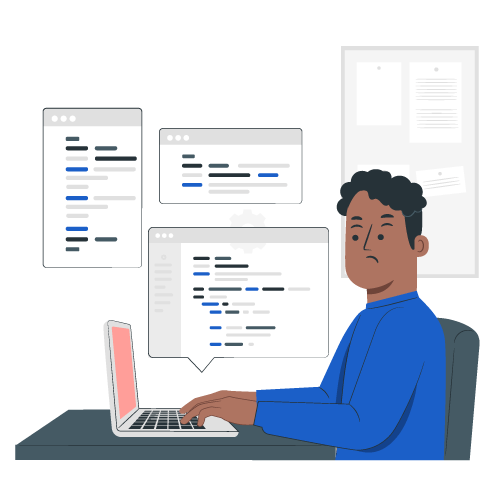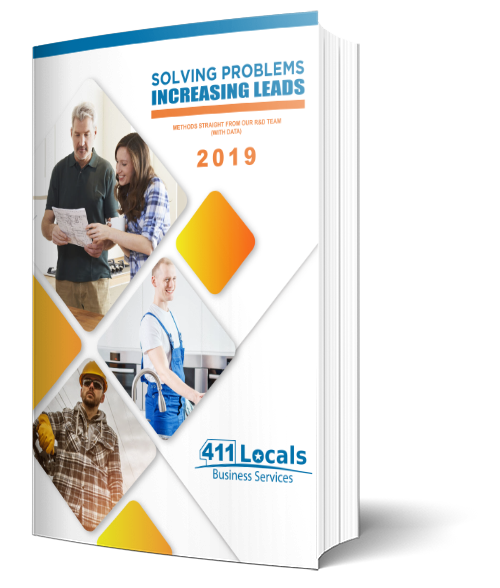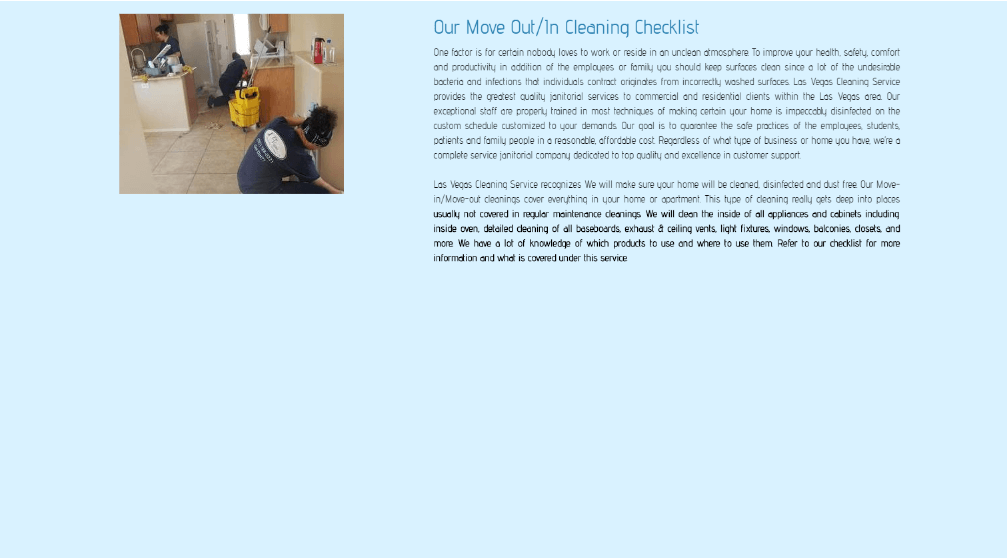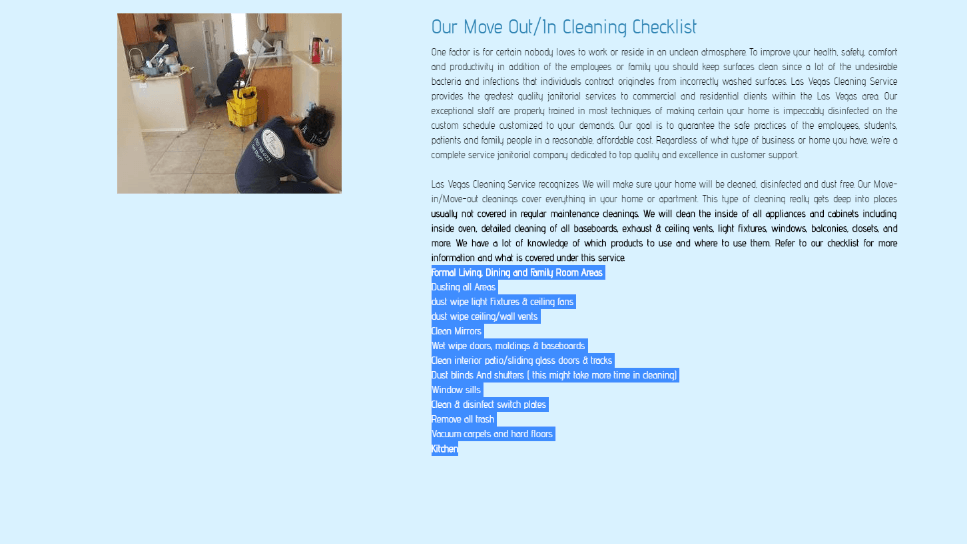10 Bad SEO Practices You Need to Abandon in 2022

Search engines like Google and Bing constantly work to improve their algorithms so they can show more accurate results and offer a better search experience to users. This means that certain SEO practices become outdated or harmful to your rankings if you continue to use them in your strategy. It also means that you need to stop following a range of unethical and bad SEO practices because, with every algorithm update, they can damage your SEO performance and rankings even more.
Search engines are getting smarter, and trying to trick them with the so-called black hat SEO tactics can end up tricking you instead. So, here is a list of the most common bad SEO practices that you should abandon in 2022 if you want to thrive.
Keep in mind that even if you work with an SEO service provider, you need to make sure the agency is not using these bad practices.
Improve Your Rankings in 2022 by Dropping These 10 Bad SEO Practices
Recommended article

SEO in 2022: Stats and Trends
Where is SEO going this year and what are the key statistics everyone should know? Read more…
Bad SEO Practice 1: Keyword Stuffing

One of the first things that come to mind when you hear the word SEO is most likely keywords. Back in the day, stuffing your content with as many keywords as you could was a good enough way to “trick” crawlers into thinking you were the top result for a related search query. That is how many used to rank their websites on page one. These days, however, are in the past and have been so for almost a decade.
Nowadays, you need to pay attention to things like keyword density, placement, targeting, and proper use.
“Keyword density” is the ratio of the number of times you have used a keyword on a web page based on all the other words on it. Back in the day, marketers believed that there was a magical percentage that guaranteed results, and even though it eventually turned out that this “sweet spot” did not actually exist, people tried to exploit it. This resulted in “keyword stuffing” that involved overusing a keyword on a page way too many times — in the title headings, paragraphs, headers, footers, etc. Google’s algorithm couldn’t really detect that as a problem back then, but it has since evolved massively.
Unfortunately for those who continue to stuff their content with keywords, Google no longer depends on keyword density to determine if a page offers a relevant answer to a search query. Nowadays, search engines like Google use a wide range of signals to rank web pages, and you need to pay attention to all of them if you want to be successful in 2022 and beyond.
While keywords continue to be one of the key elements in ranking a page, they are not the only thing that contributes to offering quality content that ranks high up in search results.
Bad SEO Practice 2: Misusing Keywords

In addition to stuffing, when it comes to choosing and using keywords in your content, there are many other SEO mistakes you can make. Many businesses and marketers continue struggling to understand the role of keywords in SEO and how they should use them in their strategy.
While researching keywords you want to target, pick wisely. Just because you like certain keywords — it does not mean they are relevant enough for your niche. A common bad practice is to try and fit your content around keywords instead of looking for keywords that would naturally fit into your messaging and brand.
The result is content and metadata that represent keywords that do not align with the company’s business or the intent of users doing an online search using these keywords. By doing that, businesses sometimes manage to boost the traffic to a page, but they lose the attention of readers as soon as they notice the content does not reflect the information they want to see. The real message of the business is lost, and so is the opportunity to close a potential lead.
Imagine typing “lawn mower” into Google with the intent of finding a new lawn mower or at least some tips on what to look for when buying one. Instead, one of the top results you find turns out to be a local landscaping company that offers lawn mowing services. Since that is not what you are currently looking for, you will quickly leave the page and click on one that meets your needs.
If you mistarget and misuse keywords, you can end up like this landscaping company and have people bouncing back from your website as soon as they land on it. Sure, you will be getting some traffic, but nothing positive will come out of that.
In SEO, it is not about getting just any traffic, it is about ranking for relevant keywords and getting the right traffic.

Bad SEO Practice 3: Cloaking and Invisible Text
When it comes to proper SEO practices, one of the worst things you can do is learn from the past. Back in the day, one of the most widely used bad SEO practices was cloaking, also known as adding invisible text on a page or presenting different versions of a page to users and search engines.

This means that businesses would add a list of keywords that are invisible to humans, but they are visible to crawlers. They did this by making those keywords the same color as the background of the website. That way the page wouldn’t look spammy with too many keywords, but it would appear “keyword-rich” for search engines.
Hiding the real destination of a link (cloaking) and showing a different version of a page to users and crawlers was a commonly used practice. As you can guess, search engines have evolved since then, and doing this today can instantly get you penalized by Google.
To explain it visually, with invisible text, this is how a web page would look like for a website visitor:

… while for a search engine, the same page with “invisible text” would look like this:

Bad SEO Practice 4: Duplicate Content
One of the most important SEO strategies in 2022 is to focus on quality and original content. If you are tempted to post the same content over and over again or directly copy someone else’s content, with or without minor tweaks, you will most likely get punished by Google rather than get a boost in rankings. To avoid this tactic, you need to steer clear of publishing duplicate content on your website at all costs.

The problem with duplicate (non-unique) content is that if search engines already have that same content in their index, they will not index the duplicate page because it has nothing new to offer, and it will be flagged.
In addition to that, if the same content appears on several pages of your website, it might confuse Google as it will not know which page to pass authority to.
If, however, you need to have some sort of duplicate (repetitive) content on your website because it is useful and important for your readers, you can still publish it, but you have to add “noindex” and “nofollow” tags on these pages, so they do not hurt your SEO. This will “tell” search engines that they should not index and follow the links on that page.
Bad SEO Practice 5: Writing Content for Robots and Not Humans

When you are deep into your SEO efforts, it can be easy to focus primarily on what search engines want and forget that their main purpose is to serve humans. Creating content with the main goal of pleasing robots instead of actual users can be a huge setback for you.
Search engines are getting better and better at spotting unnaturally written content. Adding keywords, their variations, and a bunch of other synonyms you think will get you into the crawlers’ good graces can easily lead to a poor reading experience for your website visitors. Offering low-quality content is not only a bad SEO tactic — it is also an easy way to lose user attention and your credibility. Plus, it goes against Google’s E-A-T framework.
The best SEO practice is to write for humans, not robots. Search engines are well aware of the difference.
Bad SEO Practice 6: Content Spinning

Article spinning is one of the black hat SEO tactics that many continue to do (and suffer from). Usually done by software, content spinning essentially tries to recreate a piece of text using different structures, words, and phrases. The result often is a mess of odd synonyms that try to mimic the original content but lack context and fail miserably.
Taking an article or a page that is already performing well and trying to create a close spin of the content for your website is largely considered one of the most unethical SEO practices in the industry.
Needless to say, this tactic is no longer effective. The reason? AI is getting better at spotting shady, low-quality content. If Google’s recent AI-based updates are anything to go by — the search engine is working toward offering users original, useful content that has substance and value. Those who continue to rely on content spinning tools will likely be seeing a further drop in rankings.
Bad SEO Practice 7: Buying Links
Building a successful website and ranking it organically takes time, and it requires you to be patient. One of the signals that search engines look for when ranking a page is backlinks. Inbound links, to be exact. These are links from other websites that refer users to your content. If those other websites are credible, these links serve as a sort of a recommendation and make you seem more trustworthy in the “eyes” of search engines.

For your SEO performance to be a success, you need to accumulate those links naturally over time. Unfortunately, many businesses choose the easy way out and decide to purchase links in the hopes of speeding up the process. While that may bring temporary success, it can seriously backfire in the long run.
Google considers buying any kind of links to be bad practice, and sooner or later, will find out if you have done it. You will end up losing your rankings, and it will set you back significantly.
When it comes to purchasing links, there are two main ways that black hat SEO practitioners approach this:
- Directly paying for a link in a directory
- Paying a blog post slot where they can add links
Something else that can also be flagged as unnatural links by Google is if you trade links between multiple websites you own or ones in which you have contacts. If these websites are not relevant to each other, you likely will not gain anything from doing that trade.
In the world of search engines, links are supposed to be a useful bridge that connects people to relevant content they may find interesting. Use them wisely, and in return, they will serve you well.
Bad SEO Practice 8: Leaving Spam Comments

The second best thing after a well-written blog is the awesome discussions that can take place in its comment section. Exchanging ideas, generating buzz around an interesting topic — this is what quality content is all about. The problem is that, in their quest to promote their websites and get more backlinks, some people start spamming these blog sections by shamelessly advertising their business (even if it has nothing to do with the blog/industry) and adding their links.

Finding credible websites within your industry and copy-pasting the same spammy comment on their blogs’ comment sections is a terrible way of doing SEO. Not only is it an unethical SEO practice, but it can also really hurt your rankings because search engines are good at detecting unnatural links and punishing those who seek them.
If someone is trying to spam your blog comment section, you can easily filter the types of comments and links that are allowed on your website through a WordPress plugin. You can also limit comment spamming by requiring users to enter their name and/or email address in order to leave a comment. You can go a step further and set your website so that you can manually approve each comment before it is published. This will help you sift through spammy or suspicious comments.
Many commenting platforms (including WordPress) automatically turn any links in the comments as nofollow. Nofollow links essentially tell search engines not to give authority to that link (and the website it leads to). This makes any form of link spamming for the purpose of getting a link from a high-authority website useless. It also means you should not do it in 2022!
Bad SEO Practice 9: Overusing Anchor Text

Aside from paying attention to the websites that link to yours (a.k.a. your inbound links), you also need to focus on building a strong internal linking strategy. In other words, you need to link your pages to each other, but in a way that makes sense – otherwise, it is just spamming.
Any good website focusing on offering quality UX needs to have a good site structure, and internal linking is a major part of that. Internal linking is usually done through anchor text — the part of the text, usually colored in blue, that tells you there is a link attached to it that you can follow. It is called anchor text because it serves as an “anchor” to the link. The type of content you use should tell users what they can expect if they click on that link.
There are different types of anchor text. Some may want to use the brand name they are linking to, the page title of the link, or an exact match of the main keyword of the referred page. In the past, the standard SEO practice was to use exact match and keyword-rich anchor text. But then Google’s Penguin update took a closer look at over-optimized content, and it started favoring anchor text that flowed naturally within the overall content of the page and not just keywords with links on them.
As long as you focus on creating valuable content for your audience in 2022, your SEO performance should be improving over time.
Bad SEO Practice 10: Poor UX

User experience is undoubtedly one of the crucial SEO practices to pay attention to in 2022. The way people interact with your website and the ease they navigate through its pages is what Google cares about the most.
So, how can you know if your site offers poor UX to your audience? Look at your website analytics. If, among other red flags, you notice a high bounce rate, then you are looking at a problem.
If people leave your website as soon as they land on it, your design and content likely do not meet their expectations. This can be as simple as using too many bright colors or taking forever for a page to load. Or, it can be a more complicated problem (e.g., if your navigation menu makes it difficult for people to find the type of information they need).
Think Mobile and Page Speed
Previously, Google only looked at hard data to determine page ranking. That has since changed, and after gathering loads of qualitative feedback, the search engine started making changes. The Panda update came as a result. Not only that, but Google also started using mobile responsiveness as a key ranking factor. If your website does not show properly on mobile devices and is not mobile friendly, your SEO will also take a hit (if it hasn’t already).
To help improve the mobile responsiveness and UX of your website, you can start by using Google’s mobile testing tool as well as the PageSpeed insight tool. They will give you a good starting point and tips on how to improve your speed performance.
Avoid Intrusive Interstitial Ads
You have come across these types of ads at least once in your life. They are those intrusive ads that appear midway through a news article and essentially block your screen. Whether it is an ad or an autoplay video, or even a pop-up, these all hurt UX, especially if they are out of place. The Intrusive Interstitial Update targeted exactly these types of ads and made it crucial for SEO practitioners to really evaluate the type of advertising they allow on their pages.
Rethink Pop-ups
One of the most annoying things while surfing the web is clicking on a page, and before you can actually read a single line, something pops up to cover the entire content. Asking users to sign up for your newsletter or promote an offer you are running without giving them a chance to get to know your business is far from quality UX. Look at your website and rethink every pop-up — is it really necessary, does it appear at the right moment of the buyer’s journey, is it too intrusive?
Bonus Tip: Misleading Headlines
Although it is not one of the biggest SEO troublemakers, adding misleading headlines to your content so it attracts more traffic is not only an outdated tactic, but a content strategy that can lose you many potential leads in the long run. Similar to building your content around a set of keywords that do not make much sense when paired with your business or message, trying to “lure readers in” with misleading headlines can result in a higher bounce rate and dampen your online reputation.
Bad SEO Practices: Key Takeaways
Unfortunately, in the world of digital marketing, bad SEO practices come a dime a dozen. Some of them are unethical, others are outright terrible, but they all do much more harm than good. If you want to ace your SEO performance in 2022, you need to drop some tactics and focus on white hat strategies. Here is a recap of the SEO practices you need to avoid in the new year.
Keywords
It all starts with proper keyword targeting. Do your research carefully and consider user intent when choosing your main keywords. Avoid stuffing and misuse, especially in the header and footer. Be mindful of keyword density (keep it under 2 to 3 %) and cannibalization.
Content
Avoid duplicate content and article spinning. Cloaking techniques are dated and can quickly earn you a penalty from Google. Going forward, your main concern should be to offer original, useful, and quality content that falls within the E-A-T framework. Do not try to trick search engines with spam comments, overusing anchor text, and misleading headlines/content.
Links
One of the worst SEO practices is buying links to boost your ranking. Google and other search engines are getting better at detecting unnatural links, so steer clear of that. Earning backlinks should be a gradual process, and you need to make sure only authoritative websites link to you.
UX
Both the desktop and mobile versions of your website should offer a pleasant user experience. Focus on improving page speed and mobile friendliness, and avoid intrusive interstitial ads (including pop-ups) that block the page and bring no value to the user. Following Google’s Penguin and mobile-first updates, as well as its latest AI-focused algorithm changes, it is clear that offering quick and easy access to your content across all devices is key for a successful SEO strategy.
If you are just starting your small business or trying to establish your online presence, you might need a little help. Our Online Presence Package is specially made to help businesses like yours earn greater visibility on the web and attract more customers in the long run.
Feel free to reach out to us for more details or browse through our blog to get useful tips from the digital marketing pros.
Stay tuned for our next topic!
Subscribe
By signing up to our newsletter you will not only be getting a ton of useful tips and free resources for your business, but you will also have exclusive access to our weekly promotions.


